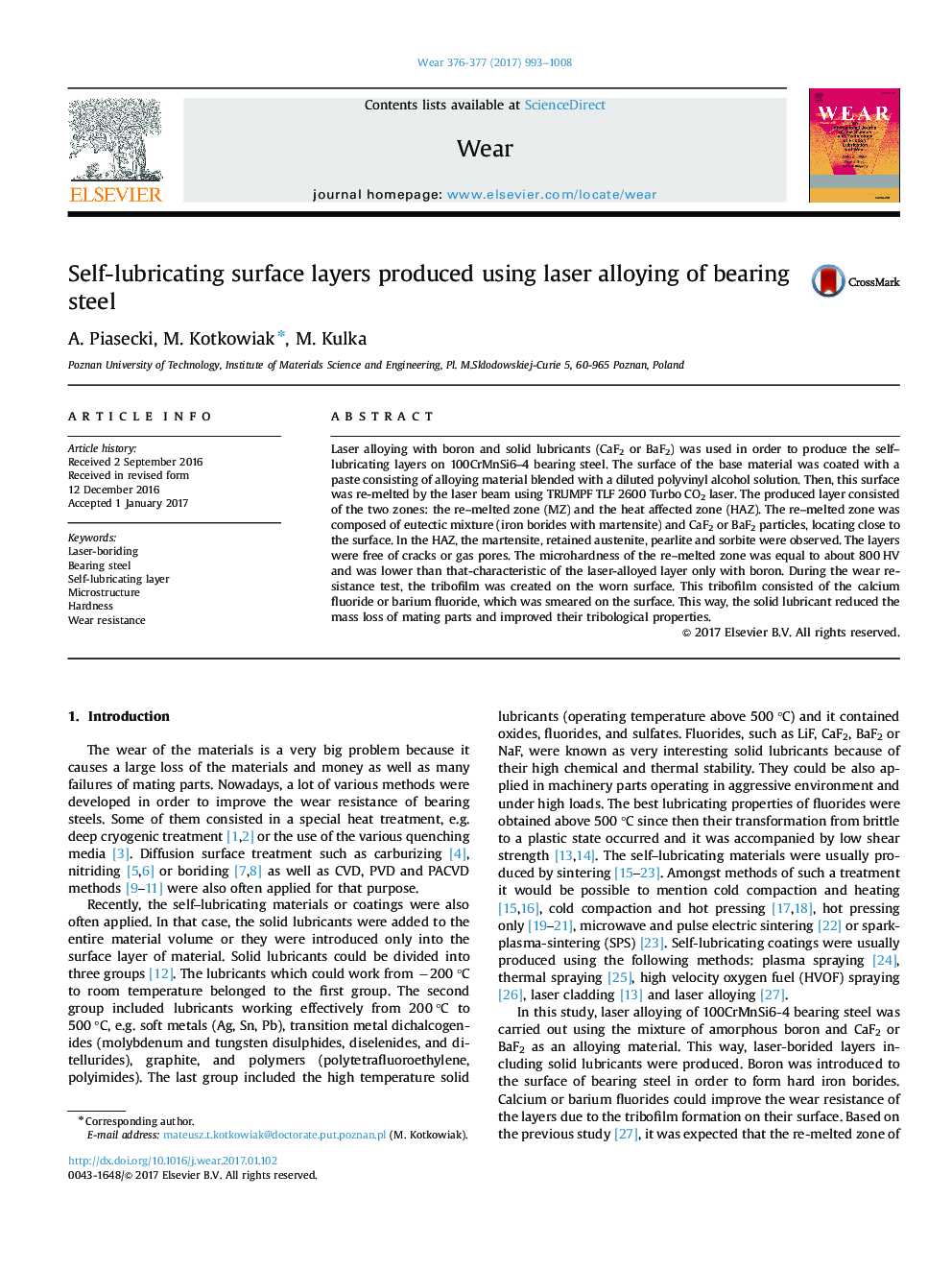| Article ID | Journal | Published Year | Pages | File Type |
|---|---|---|---|---|
| 4986542 | Wear | 2017 | 16 Pages |
â¢Laser alloying introduced boron and solid lubricant into the surface layer of steel.â¢Eutectic mixture of borides and martensite appeared in MZ, including CaF2 or BaF2.â¢Lubricant particles were vaporized, melted, re-solidified or stayed in unchanged shape.â¢Improved wear resistance resulted from tribofilm which was smeared on worn surface.â¢Tribofilm improved tribological properties in spite of the diminished hardness.
Laser alloying with boron and solid lubricants (CaF2 or BaF2) was used in order to produce the self-lubricating layers on 100CrMnSi6-4 bearing steel. The surface of the base material was coated with a paste consisting of alloying material blended with a diluted polyvinyl alcohol solution. Then, this surface was re-melted by the laser beam using TRUMPF TLF 2600 Turbo CO2 laser. The produced layer consisted of the two zones: the re-melted zone (MZ) and the heat affected zone (HAZ). The re-melted zone was composed of eutectic mixture (iron borides with martensite) and CaF2 or BaF2 particles, locating close to the surface. In the HAZ, the martensite, retained austenite, pearlite and sorbite were observed. The layers were free of cracks or gas pores. The microhardness of the re-melted zone was equal to about 800Â HV and was lower than that-characteristic of the laser-alloyed layer only with boron. During the wear resistance test, the tribofilm was created on the worn surface. This tribofilm consisted of the calcium fluoride or barium fluoride, which was smeared on the surface. This way, the solid lubricant reduced the mass loss of mating parts and improved their tribological properties.
